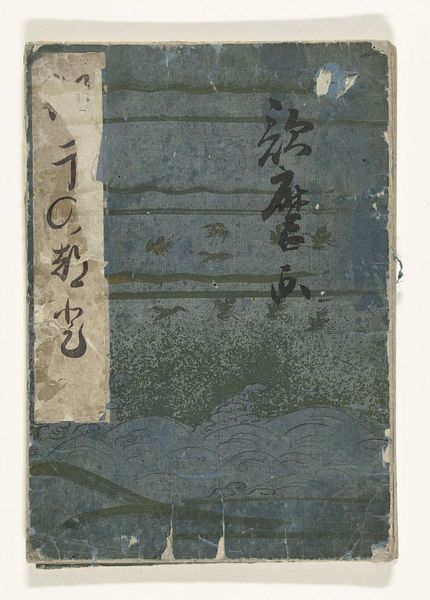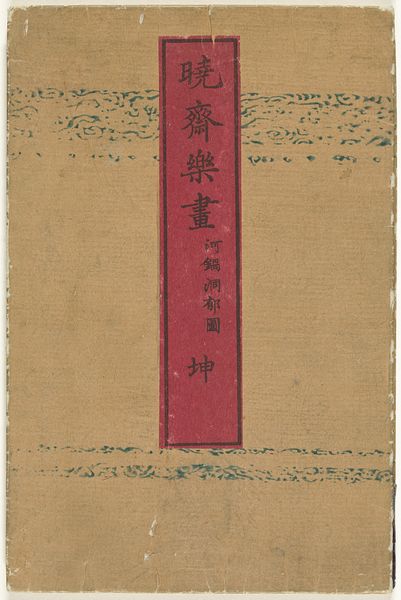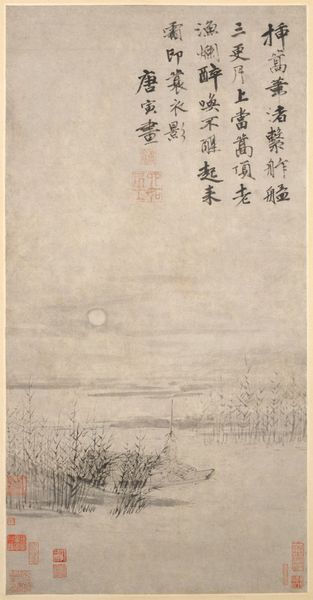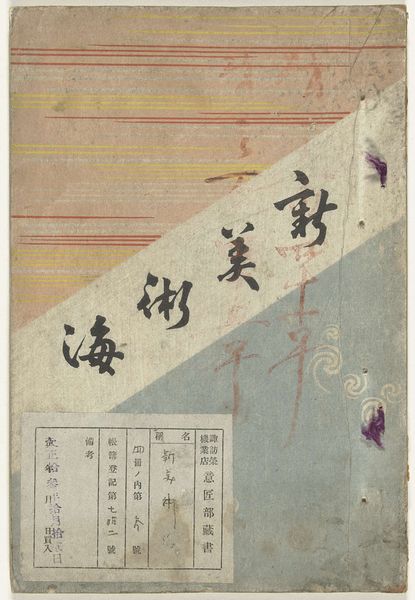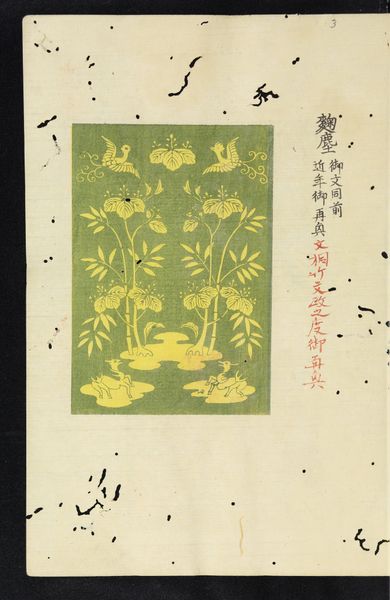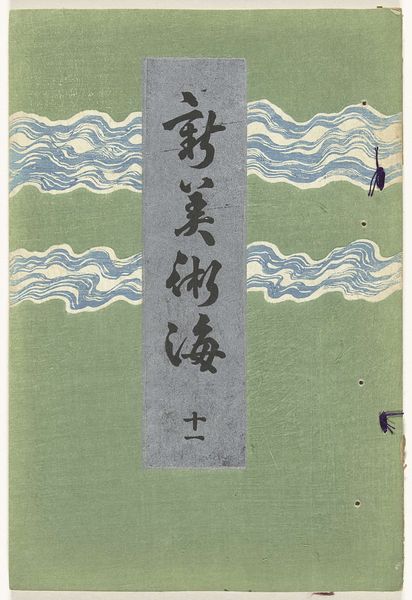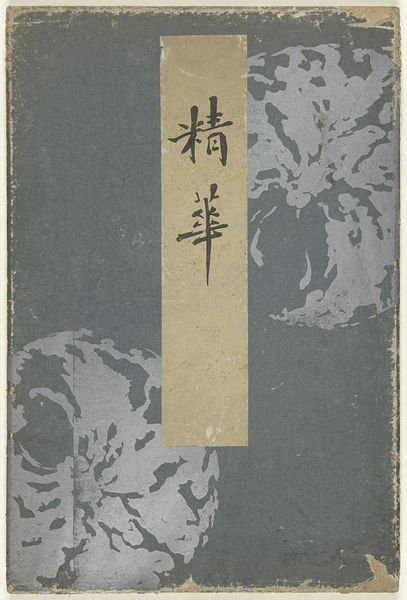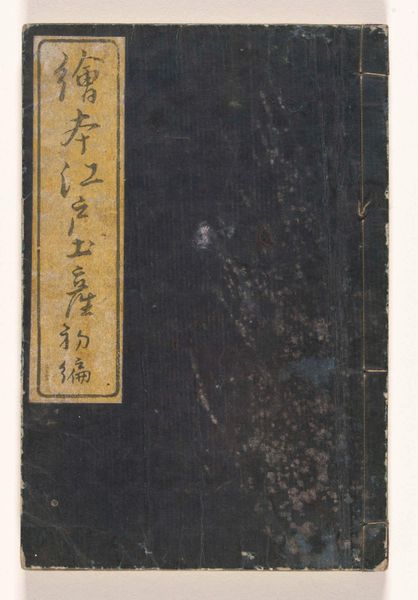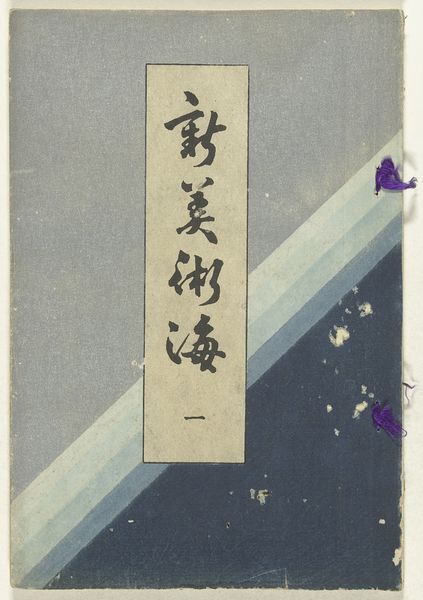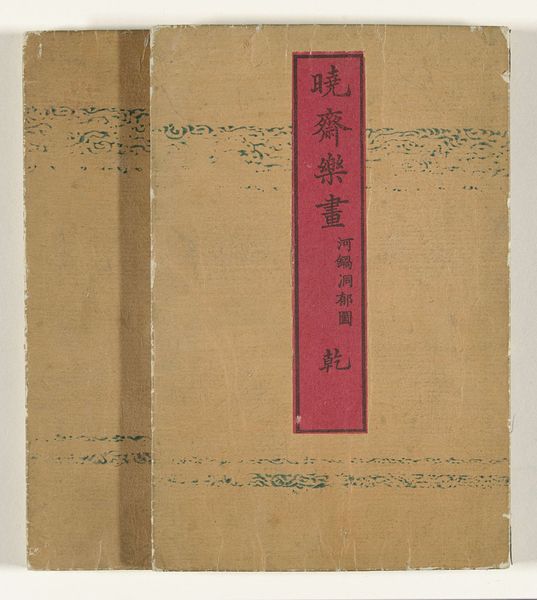
print, paper, watercolor
#
water colours
# print
#
asian-art
#
landscape
#
ukiyo-e
#
paper
#
watercolor
#
coloured pencil
Dimensions: height 256 mm, width 174 mm
Copyright: Rijks Museum: Open Domain
Curator: Here we have a print, "Famous Views of the Eastern Capital" from after 1800, created by Katsushika Hokusai. It’s part of the collection at the Rijksmuseum. Editor: It's subtle, almost faded. The blues and greens create a calming atmosphere, yet the stark lines of the reeds hint at something more structured beneath the surface. Curator: Precisely! Hokusai’s landscapes often belie a deeper engagement with social commentary. His woodblock prints, particularly the "ukiyo-e," reflected a growing commercial culture in Edo-period Japan. These 'floating world' images allowed commoners to vicariously experience luxury and beauty often reserved for the elite. Editor: I see that subversion, a way to access spaces and privileges otherwise denied. Are those depictions of aquatic plants a common theme? Curator: Indeed. Water, in particular, carried a profound significance, representing both nature's power and the ever-changing social tides. The composition subtly invites the viewer into the scene. The careful arrangements of lines create a sense of depth within this ostensibly flat surface. The materiality of the paper and watercolours suggests impermanence and vulnerability, like social status itself. Editor: I hadn’t considered how that speaks to fleeting social mobility. What strikes me now is that what appears simple becomes a narrative around cultural shifts and social accessibility through imagery. How radically democratic for the time! Curator: And the coloured pencil work adds another layer. A method available and affordable. Making art for the masses that engages critically. This wasn't just landscape art, but active participation in building the narrative of their era. Editor: That does it. Viewing this through the lens of today really highlights how access and representation are essential to social change. Curator: Absolutely. And thinking about what spaces images occupy…how prints democratized access to the art world. It gives us pause.
Comments
No comments
Be the first to comment and join the conversation on the ultimate creative platform.

